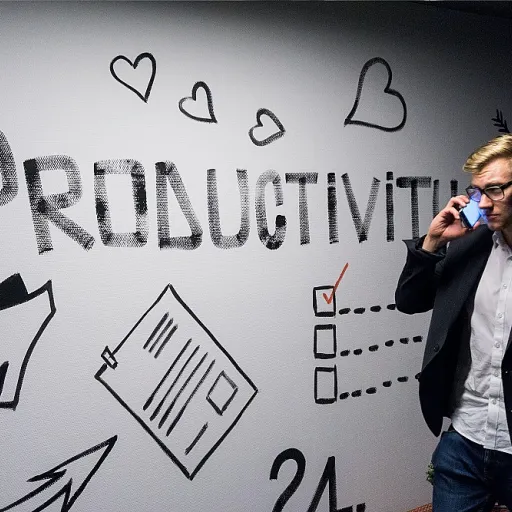
What is full cycle recruiting and why it matters in succession planning
Connecting Full Cycle Recruiting to Long-Term Talent Needs
Full cycle recruiting is more than just filling a job opening. It covers every stage of the recruitment process, from sourcing candidates to onboarding new employees. In succession planning, this approach is crucial because it ensures that the right talent is not only hired but also prepared for future leadership roles. The cycle recruiter works closely with hiring managers to identify the skills and experience needed for both current and future positions. This collaboration helps organizations build a strong talent pipeline, ready to step up when key roles become vacant.
Why a Comprehensive Approach Matters
Succession planning is about anticipating future talent needs, not just reacting to immediate vacancies. By using a full cycle recruiting strategy, companies can:
- Improve the candidate experience by providing clear communication and feedback throughout the hiring process
- Ensure a consistent recruitment process that aligns with long-term business goals
- Reduce time to hire and increase the chances of attracting top talent
- Identify gaps in skills and experience early, allowing for targeted development and training
Recruiters and hiring managers who adopt best practices in full cycle recruiting are better equipped to spot high-potential employees and nurture them for future leadership. This proactive approach supports both immediate recruitment needs and long-term succession planning goals.
Integrating Recruitment and Succession Planning
Recruiting full life cycle means every step, from writing a job description to making a job offer and onboarding, is handled with succession in mind. The recruiter is not just focused on the immediate hire but also on how each candidate fits into the organization’s future. This mindset helps organizations fill roles more effectively and create a better candidate experience, which is essential for attracting and retaining top talent.
For a deeper look at how human resources professionals can align recruiting with succession planning, check out this resource on human resources in succession planning.
Identifying key roles and future talent needs
Pinpointing Critical Positions and Anticipating Shifts
Understanding which roles are vital to your organization is a key step in the full cycle recruiting process. Not every job has the same impact on business continuity or growth. Identifying these key positions—often those with specialized skills, leadership responsibilities, or unique knowledge—helps you focus your recruitment efforts where they matter most. A thorough recruitment process starts with a clear job description. This document should outline the core responsibilities, required skills, and experience needed for success. It also sets expectations for both the hiring manager and the recruiter, ensuring everyone is aligned on what top talent looks like for each role.Forecasting Future Talent Needs
Organizations evolve, and so do their talent requirements. Effective succession planning means looking beyond immediate vacancies. Consider:- Which employees are nearing retirement or likely to move on?
- Are there emerging skills or roles your business will need in the next few years?
- How might changes in strategy or technology impact your hiring process?
Best Practices for Role Identification
- Collaborate with department leaders to map out essential roles and potential successors.
- Regularly review your organizational chart and update it as business needs change.
- Use data from previous recruitment cycles to identify positions with high turnover or hard-to-find skills.
Building a proactive talent pipeline
Creating a Talent Pipeline That Works
Building a proactive talent pipeline is a cornerstone of effective succession planning. In the full cycle recruiting process, this means not waiting until a job opens to start searching for candidates. Instead, recruiters and hiring managers work together to anticipate future talent needs and begin sourcing and engaging potential candidates early. This approach helps organizations fill critical roles faster, reduce time to hire, and improve the overall candidate experience.
- Continuous sourcing: Rather than relying solely on job postings, recruiters use networking, employee referrals, and talent acquisition platforms to identify top talent before a vacancy arises.
- Engagement and nurturing: Keeping in touch with potential candidates, even when there is no immediate job offer, helps maintain interest and builds relationships. This can include sharing company updates, inviting prospects to events, or providing insights into the recruitment process.
- Clear job descriptions: Well-defined job descriptions and skill requirements make it easier to match candidates to future roles, ensuring a better candidate and employee experience.
- Collaboration with hiring managers: Regular communication between recruiters and hiring managers ensures alignment on talent needs and expectations throughout the full life cycle of recruitment.
Recruiting full cycle means integrating sourcing, interviewing, onboarding, and development into a seamless process. This not only improves the recruitment process but also supports long-term succession planning goals. By focusing on proactive talent acquisition, organizations can identify and prepare future leaders, reducing the risks associated with unexpected vacancies.
For a deeper look at how organizations are preparing for leadership transitions and building strong talent pipelines, check out this resource on announcing the next wave of C-suite leaders.
Integrating assessment and development into the recruiting process
Embedding Assessment and Development in Every Step
Integrating assessment and development into the recruiting process is essential for effective succession planning. It’s not just about filling a job; it’s about ensuring the right talent is identified, nurtured, and ready for future leadership roles. Here’s how organizations can make this part of their full cycle recruiting strategy:- Job Descriptions with Growth in Mind: Start by crafting job descriptions that highlight not only current responsibilities but also the skills and competencies needed for future advancement. This helps recruiters and hiring managers attract candidates who are interested in long-term growth, not just the immediate role.
- Structured Assessments: Use structured interviews and skills assessments to evaluate both technical abilities and leadership potential. Incorporating these tools early in the recruitment process ensures that candidates are measured against the organization’s future needs, not just present gaps.
- Continuous Feedback: Throughout the hiring and onboarding process, provide candidates with feedback. This enhances the candidate experience and signals a commitment to development from day one. It also helps recruiters and hiring managers identify areas where new hires may need additional support or training.
- Development Plans for New Hires: Once a candidate accepts a job offer, integrate individual development plans into onboarding. This proactive approach ensures that employees are continuously developing the skills required for future roles, supporting both retention and succession goals.
- Collaboration Between Recruiters and Talent Development Teams: Encourage regular communication between recruiters, hiring managers, and talent development professionals. This alignment helps ensure that the recruitment process is fully integrated with ongoing employee development initiatives.
Best Practices for a Seamless Life Cycle
- Make assessment and development a visible part of the recruitment process, not just an afterthought.
- Use data from interviews, assessments, and onboarding to inform future hiring and development strategies.
- Regularly review and update the full life cycle recruiting process to reflect changing business needs and succession priorities.
Overcoming common challenges in full cycle recruiting for succession planning
Addressing Gaps and Bottlenecks in the Full Cycle
Even with a strong recruiting process, succession planning can face several hurdles. Recognizing these challenges early helps organizations maintain momentum and secure top talent for critical roles. Here are some common issues and practical ways to overcome them:
- Misaligned Job Descriptions: If job descriptions do not accurately reflect the skills and competencies needed for future roles, recruiters may attract candidates who are not the right fit. Regularly update job descriptions to match evolving business needs and succession plans.
- Inconsistent Candidate Experience: A disjointed hiring process can deter high-potential candidates. Ensure that each stage, from sourcing to onboarding, is seamless and transparent. This not only improves the candidate experience but also strengthens your employer brand.
- Slow Time to Hire: Delays in the recruitment process can result in losing better candidates to competitors. Streamline the full cycle by setting clear timelines, leveraging technology, and empowering hiring managers to make timely decisions.
- Limited Talent Pipeline: Relying on reactive recruitment rather than proactive talent acquisition can leave key roles unfilled. Build a robust pipeline by engaging with potential candidates before a vacancy arises and nurturing relationships over time.
- Overlooking Internal Talent: Sometimes, the best candidates are already within the organization. Encourage hiring managers and recruiters to assess internal employees for succession opportunities, using structured assessments and development plans.
- Unclear Roles for Recruiters and Hiring Managers: When responsibilities are not well defined, the recruitment process can stall. Clarify the roles of recruiters, hiring managers, and other stakeholders throughout the full life cycle to ensure accountability and efficiency.
Best Practices for a Smoother Recruitment Cycle
To overcome these challenges, organizations should focus on:
- Regular communication between recruiters and hiring managers
- Continuous review and improvement of the recruitment process
- Investing in recruiter training on succession planning and talent acquisition
- Utilizing data to track time to hire, candidate experience, and fill rates
By addressing these common obstacles, companies can create a more effective full cycle recruiting strategy that supports long-term succession planning and ensures the right talent is ready for future leadership roles.
Measuring success and adjusting your approach
Tracking Progress and Evaluating Outcomes
Measuring the effectiveness of your full cycle recruiting approach in succession planning is crucial. It’s not just about filling jobs quickly, but about ensuring the right talent is in place for future needs. To do this, organizations should track both quantitative and qualitative metrics throughout the recruitment process.- Time to hire: Monitor how long it takes to move candidates through the hiring process, from sourcing to job offer acceptance. Shorter cycles can indicate an efficient recruitment process, but speed should not compromise candidate quality.
- Quality of hire: Assess new employees’ performance and cultural fit after onboarding. This helps determine if the recruiting full cycle is attracting top talent with the right skills for critical roles.
- Candidate experience: Gather feedback from candidates about their journey, from initial contact to interview and onboarding. A positive experience can enhance your employer brand and attract better candidates in the future.
- Internal mobility: Track how often employees are promoted or moved into key roles. High internal mobility suggests your succession planning and talent pipeline are working well.
- Retention rates: Evaluate how long new hires stay with the company. High turnover may signal issues in the recruitment process or job description clarity.












